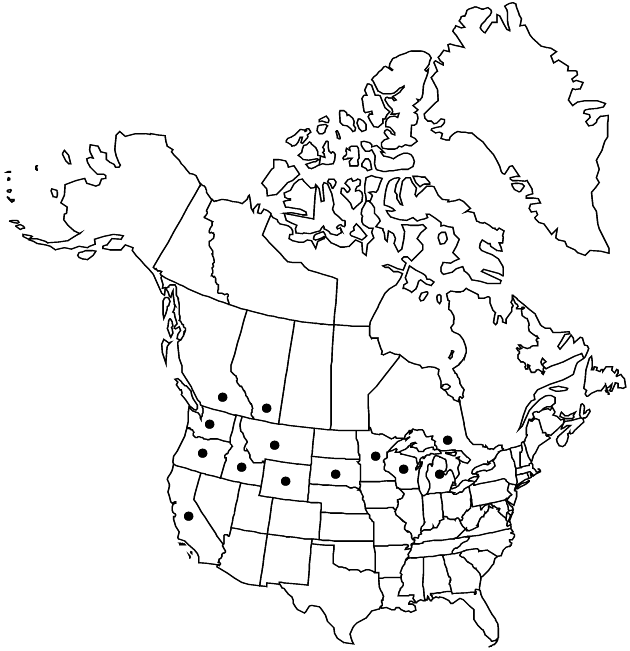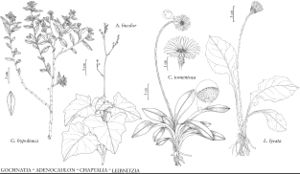Adenocaulon bicolor
Bot. Misc. 1: 19, plate 15. 1829.
Common names: Trail plant
IllustratedEndemic
Treatment appears in FNA Volume 19. Treatment on page 78.
Revision as of 20:49, 5 November 2020 by imported>Volume Importer
Aerial stems usually leafy only near bases, openly branched. Leaves: petioles winged; blades 3–nerved, 3–25 cm. Phyllaries 5–6(–10), 1–2 mm. Peripheral florets: corollas soon falling, 0.5–1.2 mm. Inner florets: corollas tardily falling, 1–2.3 mm. Cypselae 5–9 mm. 2n = 46.
Phenology: Flowering Jun–Oct.
Habitat: Woods, forests, usually in shade
Elevation: 0–2000 m
Distribution

Alta., B.C., Ont., Calif., Idaho, Mich., Minn., Mont., Oreg., S.Dak., Wash., Wis., Wyo.
Discussion
Adenocaulon bicolor is a common forest herb from southwestern Canada to central California. It is disjunct in the Black Hills (eastern Wyoming, western South Dakota) and the Great Lakes region (southern Ontario, northern Michigan). Reports of the species from Minnesota and Wisconsin are unverified.
Selected References
None.
Lower Taxa
None.
